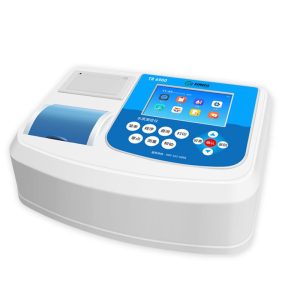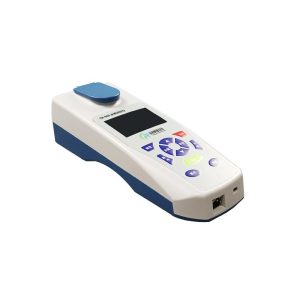Penerapan penganalisis kualitas air dalam pengujian kualitas air kolam renang
Pengujian kualitas air sangat penting untuk pengelolaan kolam renang. It can ensure the health and safety of the swimming pool, protect the health of swimmers, and provide a good swimming experience. Melalui pengujian kualitas air, key indicators in swimming pool water can be monitored, such as residual chlorine, pH, oksigen terlarut, total alkalinity, kekeruhan, dll., as well as the possible presence of bacteria, viruses, and other contaminants. Lewat sini, water quality problems can be detected in time and necessary regulatory measures can be taken to ensure that the swimming pool water body is clean, sterile, and in compliance with hygiene standards and regulatory requirements. This will not only help prevent the spread of pool-related diseases, but also improve the comfort and satisfaction of swimmers, while protecting the lasting use of pool facilities.
Pengujian kualitas air kolam renang perlu memperhatikan indikator-indikator berikut untuk memastikan kualitas air memenuhi standar kesehatan dan keselamatan:
Bebas sisa klorin: Disinfektan ditambahkan ke kolam renang, seperti klorin, dapat membentuk sisa klorin bebas. Konsentrasi sisa klorin bebas yang tepat dapat secara efektif menghilangkan bakteri dan virus di dalam air.
Total sisa klorin: Sisa klorin total mencakup sisa klorin bebas dan sisa klorin terikat dan digunakan untuk mengevaluasi efek disinfektan secara keseluruhan.
Penerapan penganalisis kualitas air dalam pengujian kualitas air kolam renang
pH: PH air kolam harus berada dalam kisaran yang sesuai (biasanya 7.2-7.8) untuk memastikan air tidak mengiritasi kulit dan mata serta dapat menjaga efektivitas disinfektan.
Suhu air: The control of water temperature is essential for the comfort of swimmers.
Turbidity: Turbidity indicates the amount of suspended matter in the water, and high turbidity may affect the transparency and visual effect of the water.
Pool pH (TA) : TA is an overall indicator of the acidity and alkalinity of swimming pool water, which is essential for maintaining the stability and suitability of the water body.
Swimming pool hardness (CH) : Hardness indicates the content of calcium and magnesium ions in the water, and a suitable hardness helps prevent scale and corrosion problems.
Pool alkalinity (CYA) : CYA is the amount of stabilizer in the pool, which protects free residual chlorine from the sun’s ultraviolet rays.
Swimming pool Cyanouric acid (CYA) : CYA adalah jumlah tabir surya yang dapat membantu mengurangi sensitivitas kulit perenang terhadap sinar UV.
Selain itu, kualitas air kolam renang perlu diuji dan dipantau secara berkala sesuai dengan peraturan dan standar terkait untuk memastikan bahwa kualitas air memenuhi persyaratan kesehatan dan keselamatan.. Frekuensi dan persyaratan pengujian kualitas air dapat bervariasi menurut wilayah dan peraturan. Karena itu, disarankan untuk mengikuti persyaratan pengujian kualitas air setempat dalam pengoperasian dan pemeliharaan kolam renang, dan secara teratur menguji dan menyesuaikan air kolam renang. Umumnya, penganalisis kualitas air digunakan untuk pengujian, dan detektor dengan fungsi parameter yang sesuai harus dipilih.

Penerapan penganalisis kualitas air dalam pengujian kualitas air kolam renang
Metode deteksi
Saat menggunakan penguji kualitas air untuk menguji kualitas air kolam renang, you can follow the following steps:
Prepare the test instrument: Ensure that the water quality test instrument is calibrated and prepare the required sensors, electrodes or test boxes according to the instruction manual.
Select the corresponding detection method according to the parameters to be measured: the common parameters of swimming pool water quality include residual chlorine, nilai pH, oksigen terlarut, total alkalinity, kekeruhan, dll.. According to the need, select the corresponding detection method and test scheme.
Take water samples: Take samples from the swimming pool to ensure that the water samples are representative. Special water sample collection containers can be used to avoid contamination or other effects on the sample.
Conduct water quality testing: according to the selected detection method, add the water sample to the testing instrument, or insert the sensor or electrode into the water sample and measure according to the instructions of the instrument.
Record and interpret the results: Record the measurement results and interpret the results according to the set standards or guidelines. Compare the measurement results with applicable water quality standards to assess the sanitary status of the water body.
Take necessary measures: According to the measurement results, if water quality problems are found or exceed the allowable range, take corresponding measures to adjust and correct. This may include adding disinfectants, adjusting pH, increasing or decreasing the amount of chemicals applied, dll..
Regular monitoring: Conduct regular water quality tests to ensure the ongoing hygiene and safety of the pool water body. As needed, rencana pemantauan dapat dikembangkan, termasuk frekuensi pengujian dan parameter pemantauan.
Penerapan penganalisis kualitas air dalam pengujian kualitas air kolam renang
Penting untuk menggunakan instrumen dan metode yang benar untuk pengujian kualitas air dan mengikuti kode pengoperasian dan langkah-langkah keselamatan yang relevan. Jika tidak yakin bagaimana cara mengoperasikannya, disarankan untuk berkonsultasi dengan profesional atau mengikuti petunjuk penggunaan instrumen.

Melalui penggunaan alat analisa kualitas air, pengelola kolam dapat memahami kondisi badan air kolam secara tepat waktu dan mengambil tindakan peraturan yang diperlukan untuk memastikan bahwa kualitas air memenuhi standar kesehatan dan persyaratan peraturan, sehingga menyediakan lingkungan berenang yang aman dan bersih bagi perenang.
